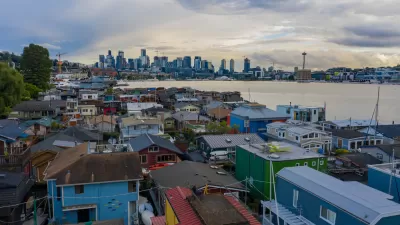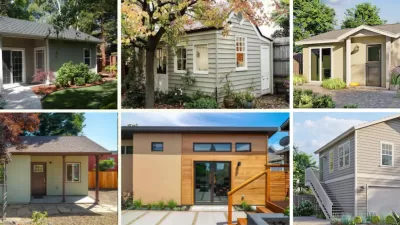One resident argues that adding a unit for long-term rental is too expensive and difficult, especially when compared to the city’s ‘super easy’ process for permitting a short-term or vacation rental.

Despite the city’s housing affordability crisis and official pledges to support increased housing production, one Seattle resident found that the process of converting his basement to an apartment for long-term renters is “painful, expensive, and risky,” unlike the “super simple” process for adding a short-term rental unit, a practice that many housing advocates blame for reducing the supply for long-term renters.
Writing on his experience in the Seattle Times, Eric Fisk notes that “For a short-term rental on your property there are no city inspections or standards for renting out your space beyond a minimal cost for registering with the city.” (According to the city’s website, some STRs, such as those that are not the owner’s primary residence or are a dedicated unit, are required to comply with the Rental Registration and Inspection Ordinance). However, adding an Attached Accessory Dwelling Unit (AADU) for long-term rental is trickier. For example, “One critical rule is that you cannot put tenants in a finished garage space if you are in a single-family zone, even if removing that parking would create new on-street parking in front of your driveway.”
According to Fisk, this has led to a huge imbalance in short-term and long-term rentals in Seattle, with only around 1,000 AADUs built since the city passed its Housing Affordability and Livability Agenda in 2016.
Fisk suggests several ways to remedy the situation, including closing the regulatory gap, waiving parking requirements for certain single-family homes, eliminating permitting fees, and providing more resources to homeowners who want to convert parts of their homes to AADUs.
FULL STORY: If Seattle cares about affordability, why does it make it so hard to add basement apartments?

Trump Administration Could Effectively End Housing Voucher Program
Federal officials are eyeing major cuts to the Section 8 program that helps millions of low-income households pay rent.

Planetizen Federal Action Tracker
A weekly monitor of how Trump’s orders and actions are impacting planners and planning in America.

Ken Jennings Launches Transit Web Series
The Jeopardy champ wants you to ride public transit.

Washington Legislature Passes Rent Increase Cap
A bill that caps rent increases at 7 percent plus inflation is headed to the governor’s desk.

From Planning to Action: How LA County Is Rethinking Climate Resilience
Chief Sustainability Officer Rita Kampalath outlines the County’s shift from planning to implementation in its climate resilience efforts, emphasizing cross-departmental coordination, updated recovery strategies, and the need for flexible funding.

New Mexico Aging Department Commits to Helping Seniors Age ‘In Place’ and ‘Autonomously’ in New Draft Plan
As New Mexico’s population of seniors continues to grow, the state’s aging department is proposing expanded initiatives to help seniors maintain their autonomy while also supporting family caregivers.
Urban Design for Planners 1: Software Tools
This six-course series explores essential urban design concepts using open source software and equips planners with the tools they need to participate fully in the urban design process.
Planning for Universal Design
Learn the tools for implementing Universal Design in planning regulations.
Heyer Gruel & Associates PA
Ada County Highway District
Institute for Housing and Urban Development Studies (IHS)
City of Grandview
Harvard GSD Executive Education
Toledo-Lucas County Plan Commissions
Salt Lake City
NYU Wagner Graduate School of Public Service





























